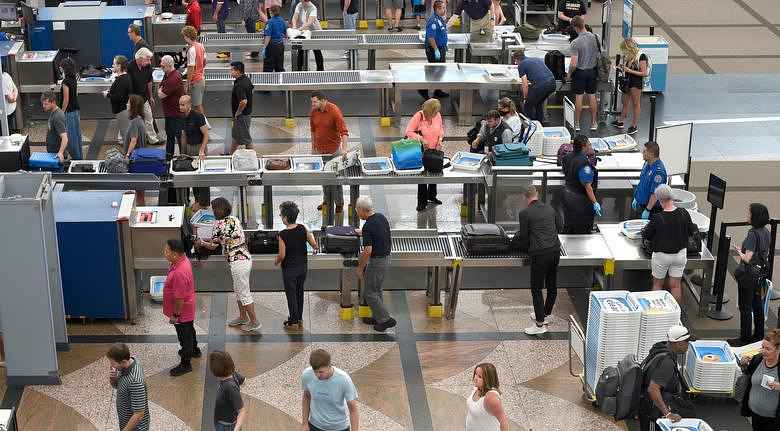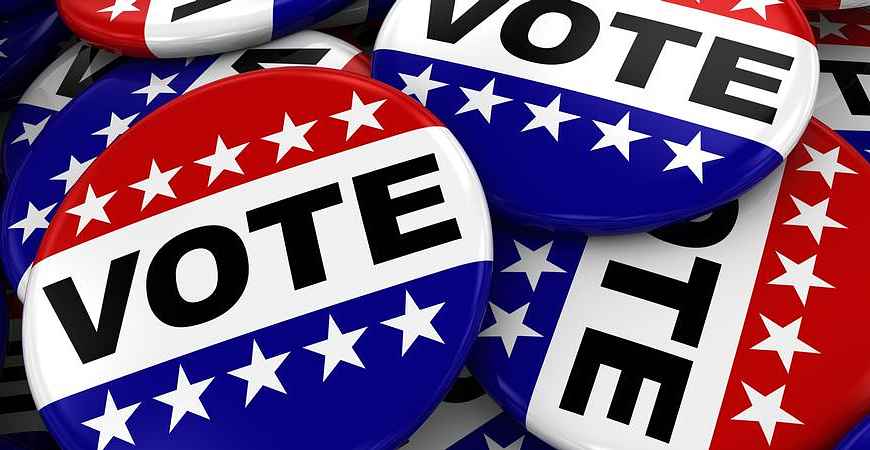





See listing of Recent and Most Popular articles on the Home Page
My World
Category: Citizenship / Topics: COVID-19 • Government • News • Politics • Racism and Inequality • Social Issues • Voting & Elections
How Should I Vote?
by Stu Johnson
Posted: August 8, 2020
Will COVID-19 impact the way you vote?…
The question I'm posing (for American voters) is not about who you should vote for, but how you should vote. The COVD-19 pandemic has increased interest in and political pressure to move toward mail-in voting.
My purpose here is to help you see the issues and decide what, for you, is the best way to vote in November, an election that will not only determine the presidency, but dozens of "down ballot" positions and issues from the federal to local levels. I will keep the details simple, but try to hit the key points you need to be aware of so you can continue researching on our own.
First, it is necessary to begin with the fact that while the U.S. Constitution broadly addresses the right to vote and Congress can set certain parameters (such as the date of federal elections), responsibility for maintaining voter rolls and administering elections falls to the states, where most of them handle the details at the county level. There are more than 3,000 counties (or similar units of government) in the 50 states and the District of Columbia. In my own state of Illinois there are 102 counties.
Therefore, if you don't know how elections work where you live, you need to find out. As an example, I can find out everything I need to know by going to my county election website (DuPageCo.org/Election). Hopefully, you will have something just as good where you live.
WHO CAN VOTE?
As a general rule, you need be at least 18 years old, be a U.S. citizen, and meet the residency requirements of your state to vote in a federal election. For other elections, some jurisdictions relax the citizenship and residency requirements, so check with your local election authority.
VOTING OPTIONS
These may vary by state, so check the details where you live.
In-person on election day. In its most direct form, voting is done by going to your precinct polling place (or designated location), filling out your ballot (paper or electronic) and, in the case of paper or punch card, personally placing the completed ballot in a sealed ballot box.
Absentee voting has been available for a long time. It guarantees that you can cast your vote even if you cannot physically go to your polling place on election day. This includes military, students and others who are away from home, as well as those with health issues and other circumstances that prevent appearing in person. This is usually done by mail, but in some states can be done electronically.
Early voting is a more recent option now available in many states. It has typically been a form of in-person voting, available in a smaller number of locations than polling places on election day, but it provides a wider window of time in which to vote. Since early voting can vary from state to state, be sure to check if and how it is available in your area.
Mail-in voting is receiving a lot of attention this year as individuals and states struggle with the impact of the COVID-19 pandemic. It is presented as a safe way to vote and there is some evidence that voter participation is higher where vote-by-mail is available
THE INTEGRITY OF THE ELECTION
There are several factors to consider regarding the integrity of your vote:
- Accuracy of the voter rolls.
Maintaining accurate voter registration records is a daunting task. People die. People move. People change names. Students go to college away from home. Others join the military, go on service projects, work away from home, and other circumstances that can cloud their status or lead to registration in more than one location. Some of that can be tracked through public records, but there is plenty of room for error or delay in making corrections. It is helpful if you are proactive and pursue a change of status for yourself or someone in your care.
A Pew research report in 2012 indicated that approximately 24-million—one in eight—voter registrations "are no longer valid or have significant inaccuracies." More recent examples abound: "Five states face federal lawsuit over inaccurate voter registrations" (RealClear Politics, January 2020), "Michigan secretary of state, county clerks hit with lawsuit over accuracy of voter rolls" (Legal Reader., June 2020) and, demonstrating another side of the story, "Fight over purging vs. accuracy of voter rolls arrives in battleground Pa" (The Fulcrum, May 2020)
Does this affect you? If you are registered, you should be able to check your registration information on your local election website or calling (usually the County Clerk or Election Commission).
- Intervening Technologies can cause delays and/or add to inequity.
Election authorities routinely use the mail to send reminders of registration status, polling locations, and other information. Any errors or delays here could potentially impact voting to some extent, but you also have a responsibility as a voter to be informed, which you can do (the fact that you are likely reading this on an Internet-connected device means you should be able to reach your local election website or by phone).
The greater danger—due to reliance on the USPS (United States Postal Service) or the internet—is actual disruption of the ability to cast a vote and have it count. With early voting or voting at your polling place on election day, you do need to be an informed citizen, but are not reliant on an intermediary as a direct part of casting your vote. On the other hand, mail can be delayed or lost, internet access can vary in quality and availability—factors that can not only impact the accuracy of the vote but exacerbate inequities already putting some communities at a disadvantage (i,e. urban poor, sparsely populated rural).
- Potential for Fraud
In general, voting in America today is widely regarded as honest and accurate, though accusations of widespread fraud persist, driven today by President Trump's tweets about vote-by-mail. Many in the press automatically dismiss anything the president (as provocateur-in-chief) says, which also prevents them from being vigilant over real problems.
Though there may be significant errors in voter rolls, my understanding is that mailings about mail-in voting in most areas have been sent only to registrants who have voted in the most recent elections. Some voting rights advocates say ballots should be sent to all registered voters, but with errors in the rolls, this could open up opportunities for fraud and waste resources.
The greatest potential for difficulty with mail-in ballots lies in the administrative challenge of handling the anticipated high volume and verifying signatures, which may be done electronically or by human workers.
Various forms of "ballot harvesting," where groups help collect absentee or mail-in ballots can cross from legitimate forms of public service to outright fraud, which has made the practice illegal in a growing number of states. Seniors who have difficulty getting to the polls may be especially prone to potential abuse, especially if the proposed "help" also includes filling out the ballot. See more on this from Townhall, RealClearPolitics and Forbes.
- Will my vote count and when will it be reported?
When we recently received a mailing about voting in 2020 from our county, it included an application for mail-in ballot. In addition to a description of qualifications, the fine print said this:
I agree that I shall return the ballot(s) to the election authority issuing the same prior to the closing of the polls on the date of the election or if returned by mail, postmarked no later than Election Day for counting no later than during the counting for provisional ballots, the last day of which is the 14th day following election day.
This raised several questions, the answers to which illustrate the crazy-quilt system of voting in America. Mind you, while there may be reasonable arguments for more national control and uniformity, it illustrates our history as a federal republic—the United States of America—where state and local authority is part of our national DNA. The system does require an informed electorate.
According to a story by MSN, 34 states will not accept ballots that arrive in the mail after Election Day—even if postmarked before the election. The other sixteen states and the District of Columbia will count ballots received after Election Day, but with different time frames and postmark requirements.
Our county requires that requests for mail-in ballots be made by October 29. That is the Thursday before Election Day on Tuesday, November 3. We can often get local mail overnight, but that seems to be pushing your luck! If you wait that long, you probably are also in the line at the Post Office on April 15 to mail your tax return!
Multiple news reports have indicated problems during recent primaries, including confusion on how much postage to apply, though USPS indicates that all ballots will be delivered, even with postage due. To help avoid the postage issue, some voting authorities in New York primaries sent prepaid (rather than pre-stamped) envelopes, only to find that these do not get a postmark!
Even if you mail your ballot well ahead of Election Day, your state may set it aside as a provisional ballot, to be counted after Election Day. Absentee ballots face the same possible fate. In one debate I heard, a proponent of mail-in voting discounted any problem, and cited as an example the military, who he claimed successfully vote by absentee. He did not mention numerous cases of disputes related to the inclusion of military absentee ballots, something that became a flash point in the contentious Florida recount in 2000.
The desire to predict a winner on Election Day, especially at the top of the ballot, has relied on exit polling since the 1960s when national television networks took center stage. This proved disastrously wrong in 2016. The major news organizations had to take a serious look at how they could make predictions in the 2018 mid-term elections. 2020 will be an even greater challenge, especially if there is a surge of mail-in voting in states that have not done it before.
Even if delivery of ballots and local administration are flawless, the fact is that many of those ballots will not be counted until after Election Day—meaning we won't have a complete count for as much as two weeks—November 17. As a number of news reports have argued (to dismiss Trump's claims), this will not be evidence of fraud, so just accept it. The problem is, we have become accustomed to knowing the results with fairly high certainty on Election Day or early the next morning.
If having to wait up to two weeks after Election Day for all the votes to be counted is part of a "new normal" we've got less than 90 days to adopt a new mindset. (While true that such delayed counting occurs now, the numbers are relatively small, though potentially significant. High volumes of vote-by-mail could be a game changer for how we watch election results until states make adjustments to include them in the Election Day count.)
Believe me, I am not trying to join the chorus of those opposed to mail-in ballots. For you it may well be the best option. But, folks, we've got to be realistic—and patient, something that is becoming more difficult as the pandemic stretches out.
WHAT TO DO?
My wife and I will likely continue to vote in person at our polling place on Election Day. Our experience with the spring primary election was no different than shopping, where people in our area have been observant of COVID protocols and our small polling place was not crowded.
You have to judge your own situation. Do all you can to be an informed voter, knowing exactly how things work where you live. If you do choose to vote-by-mail, be sure you understand how it works in your area—and don't procrastinate! Also, check out Jim Watkin's article this week, "The Truth About Lying," with some good tips on fact-checking sites and preserving your personal credibility, especially when discussing politics!.
This article also appears on Stu's InfoMatters blog.
Search all articles by Stu Johnson
Stu Johnson is principal of Stuart Johnson & Associates, a communications consultancy in Wheaton, Illinois. He is publisher and editor of SeniorLifestyle, writes the InfoMatters blog on his own website and contributes articles for SeniorLifestyle. • Author bio (website*) • E-mail the author (moc.setaicossajs@uts*) • Author's website (personal or primary**)* For web-based email, you may need to copy and paste the address yourself.
** opens in a new tab or window. Close it to return here.
Posted: August 8, 2020 Accessed 450 times
![]() Go to the list of most recent My World Articles
Go to the list of most recent My World Articles
![]() Search My World (You can expand the search to the entire site)
Search My World (You can expand the search to the entire site)
![]() Go to the list of Most Recent and Most Popular Articles across the site (Home Page)
Go to the list of Most Recent and Most Popular Articles across the site (Home Page)
 Loading requested view...
Loading requested view...
